About Us
Our History
The University of Mississippi School of Medicine was established on the campus of the University of Mississippi in Oxford in 1903, as a two-year school offering medical and graduate studies. Students in the School of Medicine left the state to complete their doctor of medicine degrees. In 1950, the State of Mississippi authorized the construction of a four-year medical school and University Hospital in order to stimulate interest in physicians practicing in the state.
Read more about the history of UMMC and the Department of Surgery, 1903-2003.
Distinguished faculty
DEPARTMENT OF SURGERY
THE UNIVERSITY OF MISSISSIPPI SCHOOL OF MEDICINE
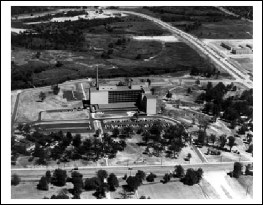 The University of Mississippi School of Medicine was established on the campus of the University of Mississippi in Oxford in 1903, as a two-year school offering medical and graduate studies. Students in the School of Medicine left the state to complete their doctor of medicine degrees. In 1950, the State of Mississippi authorized the construction of a four-year medical school and University Hospital in order to stimulate interest in physicians practicing in the State. In 1955, the School of Medicine moved to the new University of Mississippi Medical Center in Jackson, and it became a four-year medical school. The site had been occupied from 1855 through 1935 by the Mississippi State Lunatic Asylum.
The University of Mississippi School of Medicine was established on the campus of the University of Mississippi in Oxford in 1903, as a two-year school offering medical and graduate studies. Students in the School of Medicine left the state to complete their doctor of medicine degrees. In 1950, the State of Mississippi authorized the construction of a four-year medical school and University Hospital in order to stimulate interest in physicians practicing in the State. In 1955, the School of Medicine moved to the new University of Mississippi Medical Center in Jackson, and it became a four-year medical school. The site had been occupied from 1855 through 1935 by the Mississippi State Lunatic Asylum.
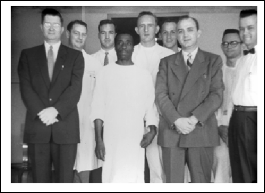 The new medical school in Jackson admitted medical students into their first through third years of training, and the first students graduated in 1957. The University Hospital admitted its first patients on July 1, 1955, and the first patient underwent repair an incarcerated inguinal hernia.
The new medical school in Jackson admitted medical students into their first through third years of training, and the first students graduated in 1957. The University Hospital admitted its first patients on July 1, 1955, and the first patient underwent repair an incarcerated inguinal hernia.
 On March 23, 1953, Dr. James D. Hardy, at that time the Director of Surgical Research at the Medical College of the University of Tennessee in Memphis, accepted the offer of Dean David Pankratz to become the first Chair of the Department of Surgery and the first clinical chair appointed at the newly forming University of Mississippi School of Medicine in Jackson. Dr. Hardy moved to Jackson in 1955, and he organized the Department of Surgery at the University of Mississippi School of Medicine.
On March 23, 1953, Dr. James D. Hardy, at that time the Director of Surgical Research at the Medical College of the University of Tennessee in Memphis, accepted the offer of Dean David Pankratz to become the first Chair of the Department of Surgery and the first clinical chair appointed at the newly forming University of Mississippi School of Medicine in Jackson. Dr. Hardy moved to Jackson in 1955, and he organized the Department of Surgery at the University of Mississippi School of Medicine.
Dr. Hardy, a native of Alabama, had trained in surgery at the University of Pennsylvania under Dr. Isidor S. Ravdin, and the surgical residencies at Mississippi were patterned after those at the University of Pennsylvania. The general surgery residency was certified by the Conference Committee for Graduate Training in Surgery in 1956.
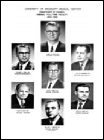 The Department of Surgery started in 1955 with seven full-time faculty members. Five of these faculty members (including Dr. Hardy) subsequently became chairs of departments throughout the United States. The department was composed initially of 9 divisions ("Subdivisions"). These were Anesthesiology, Orthopaedic Surgery, Urological Surgery, Plastic Surgery, Ophthalmology, General and Cardiothoracic Surgery, Otolaryngology, Oral Surgery, and Neurosurgery. A tenth division, Pediatric Surgery, was added subsequently. The chiefs of these divisions were both full-time and part-time faculty members. Among the full-time faculty members were the chief of Anesthesiology, Dr. Glace E. Bittenberger, the chief of Orthopaedic Surgery, Dr. William F. Enneking, and the chief of Neurosurgery, Dr. Orlando Andy. Among the part-time faculty members were the chief of Urology, Dr. Temple Ainsworth, the chief of Plastic Surgery, Dr. James H. Hendrix, Jr., the chief of Ophthalmology, Dr. Samuel B. Johnson, the chief of Otolaryngology, Dr. Edley Jones, and the chief of Oral Surgery, Dr. Walton Shannon. Dr. Hardy served as the chief of the Division of General and Cardiothoracic Surgery.
The Department of Surgery started in 1955 with seven full-time faculty members. Five of these faculty members (including Dr. Hardy) subsequently became chairs of departments throughout the United States. The department was composed initially of 9 divisions ("Subdivisions"). These were Anesthesiology, Orthopaedic Surgery, Urological Surgery, Plastic Surgery, Ophthalmology, General and Cardiothoracic Surgery, Otolaryngology, Oral Surgery, and Neurosurgery. A tenth division, Pediatric Surgery, was added subsequently. The chiefs of these divisions were both full-time and part-time faculty members. Among the full-time faculty members were the chief of Anesthesiology, Dr. Glace E. Bittenberger, the chief of Orthopaedic Surgery, Dr. William F. Enneking, and the chief of Neurosurgery, Dr. Orlando Andy. Among the part-time faculty members were the chief of Urology, Dr. Temple Ainsworth, the chief of Plastic Surgery, Dr. James H. Hendrix, Jr., the chief of Ophthalmology, Dr. Samuel B. Johnson, the chief of Otolaryngology, Dr. Edley Jones, and the chief of Oral Surgery, Dr. Walton Shannon. Dr. Hardy served as the chief of the Division of General and Cardiothoracic Surgery.
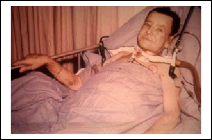 The early history of the Department of Surgery was marked by original research in cardiovascular physiology and surgery. The first open-heart operation was performed at the University Hospital on January 27, 1959.
The early history of the Department of Surgery was marked by original research in cardiovascular physiology and surgery. The first open-heart operation was performed at the University Hospital on January 27, 1959.
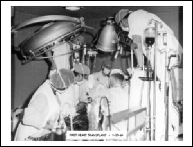 A major laboratory research effort in the Department of Surgery culminated in the world's first human-to-human lung transplant, performed at the University Hospital on June 11, 1963. This was followed on January 23, 1964, by the world's first human heart transplant. The donor heart was from a chimpanzee.
A major laboratory research effort in the Department of Surgery culminated in the world's first human-to-human lung transplant, performed at the University Hospital on June 11, 1963. This was followed on January 23, 1964, by the world's first human heart transplant. The donor heart was from a chimpanzee.
The Mississippi Surgical Forum, 1974 - 1991
In 1974, the Department of Surgery established The University of Mississippi Postgraduate Surgical Forum. "The Mississippi Surgical Forum," as it came to be known, attracted attendees from around the nation. Dr. Hardy described the genesis of The Mississippi Surgical Forum:
The last Mississippi Surgical Forum (number 18) was held April 4-6, 1991.
 In 1981, Dr. Hardy served as President of the American College of Surgeons. Dr. Hardy was elected in 1978 to the position of Second Vice President in the American College of Surgeons, completing the term of Dr. Curtis Artz who had died. Dr. Artz had been one of Dr. Hardy's original faculty members in the Department of Surgery, and Dr. Artz had become the professor and chair in the Department of Surgery at the Medical University of South Carolina. In 1981, Dr. Hardy became the editor of the World Journal of Surgery, and the editorial offices were moved to the Department of Surgery during that period.
In 1981, Dr. Hardy served as President of the American College of Surgeons. Dr. Hardy was elected in 1978 to the position of Second Vice President in the American College of Surgeons, completing the term of Dr. Curtis Artz who had died. Dr. Artz had been one of Dr. Hardy's original faculty members in the Department of Surgery, and Dr. Artz had become the professor and chair in the Department of Surgery at the Medical University of South Carolina. In 1981, Dr. Hardy became the editor of the World Journal of Surgery, and the editorial offices were moved to the Department of Surgery during that period.
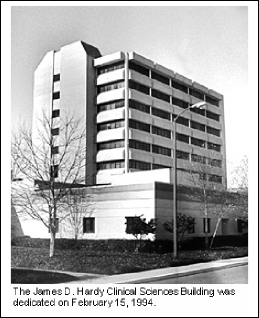 In 1994, the University Medical Center's Clinical Sciences Building, erected in 1977, was designated the James D. Hardy Clinical Sciences Building.
In 1994, the University Medical Center's Clinical Sciences Building, erected in 1977, was designated the James D. Hardy Clinical Sciences Building.
Dr. Hardy concluded his career as Chair of the Department of Surgery in 1987. From 1988 – 1990, Dr. Hardy served as a Distinguished Professor at the VA Medical Center, an honor afforded only 12 physicians in the United States.
The James D. Hardy Society
The James D. Hardy Society was established as the alumni organization of the general and cardiothoracic surgery residencies of the Department of Surgery. The first meeting of the Society was held in Jackson in 1992. Membership in the Society was initially open to those residents who had received some training under Dr. Hardy. In 2000, the Society adopted a proposal from Dr. William W. Turner, Jr. that the membership in the Society be opened to all graduates of the general and cardiothoracic surgery residencies. The first new members in a decade were inducted into the Society in 2001. The Society meets annually with academic presentations by members and residents, as well as social activities.
Dr. Robert S. Rhodes
 In 1988, Dr. Robert S. Rhodes became the second Chair of the Department of Surgery, and he was the first person to hold the James D. Hardy Chair. Dr. Rhodes had trained in general surgery at the University Hospitals of Cleveland. He was recruited from Case Western Reserve University. Dr. Rhodes introduced computers into widespread use in the department. He instituted a faculty practice plan in the Division of General Surgery, and he focused the department's research endeavors in peripheral vascular surgery. Dr. Rhodes served as chair until 1996.
In 1988, Dr. Robert S. Rhodes became the second Chair of the Department of Surgery, and he was the first person to hold the James D. Hardy Chair. Dr. Rhodes had trained in general surgery at the University Hospitals of Cleveland. He was recruited from Case Western Reserve University. Dr. Rhodes introduced computers into widespread use in the department. He instituted a faculty practice plan in the Division of General Surgery, and he focused the department's research endeavors in peripheral vascular surgery. Dr. Rhodes served as chair until 1996.
Dr. William W. Turner, Jr.
 In 1998, Dr. William W. Turner, Jr. became the Chair of the Department of Surgery. He had trained in general surgery at the University of Texas Southwestern Medical Center in Dallas, and he was recruited from the Indiana University School of Medicine and Clarian Health Partners in Indianapolis, Indiana.
In 1998, Dr. William W. Turner, Jr. became the Chair of the Department of Surgery. He had trained in general surgery at the University of Texas Southwestern Medical Center in Dallas, and he was recruited from the Indiana University School of Medicine and Clarian Health Partners in Indianapolis, Indiana.
Anesthesiology
 The Division of Anesthesiology was established in the Department of Surgery with Dr. Glace E. Bittenberger as its first chief in 1955. Dr. Bittenberger was recruited from his position as chief of anesthesiology at the Veterans Administration Hospital at Baylor University Medical Center in Houston to one of the original full-time faculty positions in the Department of Surgery. Dr. Bittenberger had trained at Charity Hospital in New Orleans. Following Dr. Bittenberger's retirement, Dr. Hardy suggested that the Division of Anesthesiology be made a separate department in order to facilitate recruitment of a chair.
The Division of Anesthesiology was established in the Department of Surgery with Dr. Glace E. Bittenberger as its first chief in 1955. Dr. Bittenberger was recruited from his position as chief of anesthesiology at the Veterans Administration Hospital at Baylor University Medical Center in Houston to one of the original full-time faculty positions in the Department of Surgery. Dr. Bittenberger had trained at Charity Hospital in New Orleans. Following Dr. Bittenberger's retirement, Dr. Hardy suggested that the Division of Anesthesiology be made a separate department in order to facilitate recruitment of a chair.
Orthopedic Surgery
The Division of Orthopedic Surgery was established in the Department of Surgery in 1955 with Dr. Thomas H. Blake, a community orthopedist, as its first chief.

In 1955, Dr. William F. Enneking became the chief of the division of Orthopedic Surgery and one of the original full-time faculty members in the Department of Surgery. Dr. Enneking was recruited from the University of Chicago where he had just completed his residency.
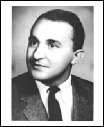 Dr. Paul S. Derian became the chief of the Division of Orthopedics in 1960, and he served in that capacity until 1976.
Dr. Paul S. Derian became the chief of the Division of Orthopedics in 1960, and he served in that capacity until 1976.
 Dr. James L. Hughes, one of the original faculty members of the School of Medicine became chief of the Division of Orthopedics in 1977, and the division became the Department of Orthopedic Surgery and Rehabilitation in 1986 under the leadership of Dr. Hughes.
Dr. James L. Hughes, one of the original faculty members of the School of Medicine became chief of the Division of Orthopedics in 1977, and the division became the Department of Orthopedic Surgery and Rehabilitation in 1986 under the leadership of Dr. Hughes.
Ophthalmology
 The Division of Ophthalmology was established in 1955, with Dr. Samuel B. Johnson, an established practitioner in the community, as its chief. It became the Department of Ophthalmology in 1987 under the chairmanship of Dr. Johnson. Dr. Johnson had trained at Tulane University School of Medicine and the New Orleans Eye, Ear, Nose and Throat Hospital prior to beginning practice in Jackson.
The Division of Ophthalmology was established in 1955, with Dr. Samuel B. Johnson, an established practitioner in the community, as its chief. It became the Department of Ophthalmology in 1987 under the chairmanship of Dr. Johnson. Dr. Johnson had trained at Tulane University School of Medicine and the New Orleans Eye, Ear, Nose and Throat Hospital prior to beginning practice in Jackson.
Neurosurgery
 The Division of Neurosurgery was established in 1955 with Dr. Orlando Andy, one of the original full-time faculty members in the Department of Surgery, as its chief. He had trained in neurosurgery at the University of Tennessee while Dr. Hardy was there as a faculty member and at Hopkins from which he was recruited following completion of fellowship training. The Division of Neurosurgery became the Department of Neurosurgery in 1960, with Dr. Andy as its first chair. He founded the neurosurgery residency training program at the University of Mississippi School of Medicine.
The Division of Neurosurgery was established in 1955 with Dr. Orlando Andy, one of the original full-time faculty members in the Department of Surgery, as its chief. He had trained in neurosurgery at the University of Tennessee while Dr. Hardy was there as a faculty member and at Hopkins from which he was recruited following completion of fellowship training. The Division of Neurosurgery became the Department of Neurosurgery in 1960, with Dr. Andy as its first chair. He founded the neurosurgery residency training program at the University of Mississippi School of Medicine.
Oral Surgery and Dentistry
 Dr. Walton M. Shannon became the first chief of the Division of Oral Surgery and Dentistry in 1956. He was an established practitioner in the community who had trained in oral surgery at the University of Michigan. Dr. Shannon retained his faculty appointment until 1976. The School of Dentistry opened at the medical center in 1977, and the first Dean was appointed, establishing the Department of Oral Surgery in the School of Dentistry.
Dr. Walton M. Shannon became the first chief of the Division of Oral Surgery and Dentistry in 1956. He was an established practitioner in the community who had trained in oral surgery at the University of Michigan. Dr. Shannon retained his faculty appointment until 1976. The School of Dentistry opened at the medical center in 1977, and the first Dean was appointed, establishing the Department of Oral Surgery in the School of Dentistry.
Otolaryngology
 The first chief of the Division of Otolaryngology was Dr. Edley Jones, an established practitioner in Vicksburg, Mississippi, who served in that position from 1956 - 1960. Dr. Jones had received training in the beginning specialty of eye, ear, nose, and throat disease at the New York Eye and Ear Infirmary, Temple University, and the Chicago Eye and Ear Infirmary.
The first chief of the Division of Otolaryngology was Dr. Edley Jones, an established practitioner in Vicksburg, Mississippi, who served in that position from 1956 - 1960. Dr. Jones had received training in the beginning specialty of eye, ear, nose, and throat disease at the New York Eye and Ear Infirmary, Temple University, and the Chicago Eye and Ear Infirmary.
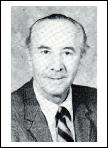 Dr. Godfrey E. Arnold was chief from 1963 – 1979. He had trained in otolaryngology at the Vienna University and at Berlin University. He was recruited to the Department of Surgery from the New York Eye and Ear Infirmary. Dr. Arnold started the otolaryngology residency at the University of Mississippi Medical Center.
Dr. Godfrey E. Arnold was chief from 1963 – 1979. He had trained in otolaryngology at the Vienna University and at Berlin University. He was recruited to the Department of Surgery from the New York Eye and Ear Infirmary. Dr. Arnold started the otolaryngology residency at the University of Mississippi Medical Center.
 He was succeeded by Dr. Myron W. Lockey from 1979-1980. Dr. Lockey was a native of Jackson who had completed training in otolaryngology at the Veterans Administration Hospital in Dallas.
He was succeeded by Dr. Myron W. Lockey from 1979-1980. Dr. Lockey was a native of Jackson who had completed training in otolaryngology at the Veterans Administration Hospital in Dallas.
 Dr. Winsor V. Morrison was chief from 1981 - 1993. Dr. Morrison had trained in otolaryngology at Washington University in St. Louis, and he was recruited from the University of Tennessee for Health Sciences in Memphis.
Dr. Winsor V. Morrison was chief from 1981 - 1993. Dr. Morrison had trained in otolaryngology at Washington University in St. Louis, and he was recruited from the University of Tennessee for Health Sciences in Memphis.
 Dr. Vinod Anand served as chief from 1993 – 2001, assuming the position with the retirement of Dr. Morrison. He had trained at the Manhatten Eye, Ear and Throat Hospital in New York and the Merch Hospital in Pittsburgh, Pennsylvania, and he had been recruited to the Division of Otolaryngology from his residency.
Dr. Vinod Anand served as chief from 1993 – 2001, assuming the position with the retirement of Dr. Morrison. He had trained at the Manhatten Eye, Ear and Throat Hospital in New York and the Merch Hospital in Pittsburgh, Pennsylvania, and he had been recruited to the Division of Otolaryngology from his residency.
 In 2001, Dr. Scott Stringer became chief of the division, and in 2002, the division became the Department of Otolaryngology and Communicative Disorders. Dr. Stringer had trained in Otolaryngology at the University of Texas Southwestern Medical Center, and he was recruited from the University of Florida in Gainesville.
In 2001, Dr. Scott Stringer became chief of the division, and in 2002, the division became the Department of Otolaryngology and Communicative Disorders. Dr. Stringer had trained in Otolaryngology at the University of Texas Southwestern Medical Center, and he was recruited from the University of Florida in Gainesville.
General Surgery
The Division of General Surgery has been headed by the chair of the Department of Surgery since its founding in 1955. The general surgery residency began in 1955, and the first four chief residents finished in 1956.
Plastic Surgery
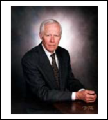 The first chief of the Division of Plastic Surgery was Dr. James Harvey Hendrix, Jr., as established community practitioner. Dr. Hendrix had trained in plastic surgery under Dr. Truman Blocker of Galveston, and he had moved to Mississippi in 1952 to become the first plastic surgeon in the state. He played a role in recruiting Dr. Hardy to Mississippi. Dr. Hendrix established the plastic surgery residency at The University of Mississippi, and the first chief resident finished in 1960. Dr. Hendrix served as chief of the Division of Plastic Surgery from 1955 - 1972.
The first chief of the Division of Plastic Surgery was Dr. James Harvey Hendrix, Jr., as established community practitioner. Dr. Hendrix had trained in plastic surgery under Dr. Truman Blocker of Galveston, and he had moved to Mississippi in 1952 to become the first plastic surgeon in the state. He played a role in recruiting Dr. Hardy to Mississippi. Dr. Hendrix established the plastic surgery residency at The University of Mississippi, and the first chief resident finished in 1960. Dr. Hendrix served as chief of the Division of Plastic Surgery from 1955 - 1972.
 Dr. Michael Jabaley assumed the leadership of the Division of Plastic Surgery in 1972, and he held that position until 1979. He was recruited from the Johns Hopkins School of Medicine where he had trained in plastic surgery and was a faculty member.
Dr. Michael Jabaley assumed the leadership of the Division of Plastic Surgery in 1972, and he held that position until 1979. He was recruited from the Johns Hopkins School of Medicine where he had trained in plastic surgery and was a faculty member.
 Dr. Fred Heckler was chief of the Division of Plastic Surgery from 1979 – 1982. He had trained in plastic surgery at the Wilford Hall USAF Medical Center in San Antonio, Texas, and he had been recruited to the Division of Plastic Surgery by Dr. Jabaley.
Dr. Fred Heckler was chief of the Division of Plastic Surgery from 1979 – 1982. He had trained in plastic surgery at the Wilford Hall USAF Medical Center in San Antonio, Texas, and he had been recruited to the Division of Plastic Surgery by Dr. Jabaley.
Dr. George Eli Howell, II was acting chief of the Division of Plastic Surgery from 1982 – 1983. Dr. Howell completed his residency in plastic surgery with Dr. Heckler in the Division of Plastic Surgery at the University of Mississippi Medical Center.
 Dr. Heber Etheridge was the acting chief of the Division of Plastic Surgery from 1983 – 1986. He was Dr. James Hendrix's first chief resident in plastic surgery at the University of Mississippi Medical Center. He was a member of the clinical faculty in the Division of Plastic Surgery and a practitioner in the community.
Dr. Heber Etheridge was the acting chief of the Division of Plastic Surgery from 1983 – 1986. He was Dr. James Hendrix's first chief resident in plastic surgery at the University of Mississippi Medical Center. He was a member of the clinical faculty in the Division of Plastic Surgery and a practitioner in the community.
 Dr. Suman Das was chief of the division from 1986 – 1995. He trained in plastic surgery at the Royal Victoria Infirmary in Newcastle, United Kingdom and the University of Mississippi Medical Center prior to joining the faculty at the University of Mississippi Medical Center.
Dr. Suman Das was chief of the division from 1986 – 1995. He trained in plastic surgery at the Royal Victoria Infirmary in Newcastle, United Kingdom and the University of Mississippi Medical Center prior to joining the faculty at the University of Mississippi Medical Center.
 Dr. Michael Angel was recruited from the Johns Hopkins Medical School. He trained in otolaryngology at the Yale New Haven Hospital and in plastic surgery at the University of Virginia in Charlottesville. He became chief of the Division of Plastic Surgery in 1995, and he held that position until 2003. He enhanced the division's programs in craniofacial surgery and established the multidisciplinary Children's Craniofacial Center at the Batson Hospital for Children.
Dr. Michael Angel was recruited from the Johns Hopkins Medical School. He trained in otolaryngology at the Yale New Haven Hospital and in plastic surgery at the University of Virginia in Charlottesville. He became chief of the Division of Plastic Surgery in 1995, and he held that position until 2003. He enhanced the division's programs in craniofacial surgery and established the multidisciplinary Children's Craniofacial Center at the Batson Hospital for Children.
 Dr. William Lineaweaver was recruited from the Stanford University School of Medicine, and he assumed the position of chief of the division in 2003. He trained in plastic surgery at the University of California in San Francisco. Dr. Lineaweaver has expanded the division's research and clinical care programs in the microvascular and hand surgery and in cosmetic and reconstructive surgery, bringing the training programs and the faculty to national prominence.
Dr. William Lineaweaver was recruited from the Stanford University School of Medicine, and he assumed the position of chief of the division in 2003. He trained in plastic surgery at the University of California in San Francisco. Dr. Lineaweaver has expanded the division's research and clinical care programs in the microvascular and hand surgery and in cosmetic and reconstructive surgery, bringing the training programs and the faculty to national prominence.
Cardiothoracic Surgery
Dr. Hardy established the cardiothoracic residency training program within the Division of General and Cardiothoracic Surgery when he came in 1955 as chairman of the department of surgery. The first chief resident finished in 1956.
 In 1976, Dr. Fred A. Crawford became chief of the Division of Cardiac Surgery, and he remained in this position until his departure in 1979. He was recruited from Duke University Medical Center in Durham, North Carolina where he had completed training in cardiothoracic surgery.
In 1976, Dr. Fred A. Crawford became chief of the Division of Cardiac Surgery, and he remained in this position until his departure in 1979. He was recruited from Duke University Medical Center in Durham, North Carolina where he had completed training in cardiothoracic surgery.
 In 1979, Dr. Bobby J. Heath was appointed acting director of Cardiac Surgery, and in 1980, he became chief of the Division of Cardiac Surgery. He had trained at the University of Mississippi Medical Center in cardiothoracic surgery. He served as chief of the division until his untimely death in 2000.
In 1979, Dr. Bobby J. Heath was appointed acting director of Cardiac Surgery, and in 1980, he became chief of the Division of Cardiac Surgery. He had trained at the University of Mississippi Medical Center in cardiothoracic surgery. He served as chief of the division until his untimely death in 2000.
 Dr. Giorgio Aru assumed the position of chief of the Division of Cardiothoracic Surgery in 2002. Dr. Aru trained in cardiothoracic surgery at the University of Padua Medical School in Padua, Italy, the Children's Hospital of Philadelphia, and the University of Mississippi Medical Center.
Dr. Giorgio Aru assumed the position of chief of the Division of Cardiothoracic Surgery in 2002. Dr. Aru trained in cardiothoracic surgery at the University of Padua Medical School in Padua, Italy, the Children's Hospital of Philadelphia, and the University of Mississippi Medical Center.
 Dr. Lawrence Creswell became the chief of the Division of Cardiothoracic Surgery in 2002. Dr. Creswell trained in cardiothoracic surgery at the Washington University School of Medicine in St. Louis, and he was recruited to the Department of Surgery from there.
Dr. Lawrence Creswell became the chief of the Division of Cardiothoracic Surgery in 2002. Dr. Creswell trained in cardiothoracic surgery at the Washington University School of Medicine in St. Louis, and he was recruited to the Department of Surgery from there.
Urology
 The first chief of the Division of Urology was Dr. Temple Ainsworth. He served in that capacity from 1955 – 1968. Dr. Ainsworth was an established urologist in Jackson upon Dr. Hardy's arrival, and he was later the president of the American Urological Association. He started the urology residency in the Department of Surgery.
The first chief of the Division of Urology was Dr. Temple Ainsworth. He served in that capacity from 1955 – 1968. Dr. Ainsworth was an established urologist in Jackson upon Dr. Hardy's arrival, and he was later the president of the American Urological Association. He started the urology residency in the Department of Surgery.
 Dr. Lamar Weems was chief from 1968 – 1990 and from 2002 - 2003. He trained in urology at he University of Mississippi Medical Center and at the Massachusetts General Hospital. Following his residency, he was recruited back to the University of Mississippi Medical Center by Dr. Ainsworth.
Dr. Lamar Weems was chief from 1968 – 1990 and from 2002 - 2003. He trained in urology at he University of Mississippi Medical Center and at the Massachusetts General Hospital. Following his residency, he was recruited back to the University of Mississippi Medical Center by Dr. Ainsworth.
 Dr. Jackson Fowler was chief of the division from 1991 – 2002. He trained in urology at Stanford University in Palo Alto, California, and at the memorial Sloan-Kettering Cancer Center in New York. He was recruited from the University of Illinois in Chicago.
Dr. Jackson Fowler was chief of the division from 1991 – 2002. He trained in urology at Stanford University in Palo Alto, California, and at the memorial Sloan-Kettering Cancer Center in New York. He was recruited from the University of Illinois in Chicago.

In 2003, Dr. John Wiener was recruited from Duke University Medical Center in Durham, North Carolina, to become the chief of the division. He had trained in urology at Duke and at Baylor University Medical Center in Houston.

Dr. Charles Pound became chief of the Division of Urology in 2005. He had been recruited from the University of Pittsburgh by Dr. Wiener. He completed training in urology at the Johns Hopkins Hospital.
Pediatric Surgery
 Dr. Richard C. Miller was recruited to the Department of Surgery in 1969 from Western Reserve University School of Medicine. He had trained in pediatric surgery at the Memorial Children's Hospital in Melbourne, Australia.
Dr. Richard C. Miller was recruited to the Department of Surgery in 1969 from Western Reserve University School of Medicine. He had trained in pediatric surgery at the Memorial Children's Hospital in Melbourne, Australia.
Dr. Miller was succeeded as chief of the Division of Pediatric Surgery by Dr. John Gosche in 2001. He was recruited from the Yale University School of Medicine where he had joined the faculty after completing training in pediatric surgery at the Columbus Children's Hospital and Ohio State University School of Medicine in Columbus, Ohio.
Veterans Administration Medical Center, Jackson, Mississippi
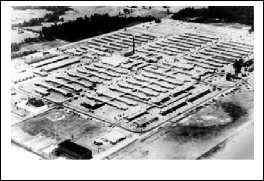 In January 1946, the Veterans Administration assumed operation of the Foster General Hospital on Lindberg Drive in Jackson. Named after Col. C.L. Foster, a native Mississippian who had served 40 years in the Army Medical Corps, the 2,000-bed cantonment-type hospital had been used by the United States Army since June 15, 1943. The facility consisted of 112 buildings on a plot of 136 acres. The VA Hospital operated 540 beds. Much of the treatment during the late 1940s involved continuing care for the wounded of World War II. The first affiliation between the Veterans Administration Hospital and the University Medical Center came in 1955. The first assignment of residents to the VA Hospital was in 1956.
In January 1946, the Veterans Administration assumed operation of the Foster General Hospital on Lindberg Drive in Jackson. Named after Col. C.L. Foster, a native Mississippian who had served 40 years in the Army Medical Corps, the 2,000-bed cantonment-type hospital had been used by the United States Army since June 15, 1943. The facility consisted of 112 buildings on a plot of 136 acres. The VA Hospital operated 540 beds. Much of the treatment during the late 1940s involved continuing care for the wounded of World War II. The first affiliation between the Veterans Administration Hospital and the University Medical Center came in 1955. The first assignment of residents to the VA Hospital was in 1956. 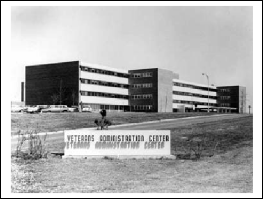 In January 1957, a senior resident in general surgery, Dr. Samuel Leb, was assigned to the VA Hospital. The following year, two general surgery residents, Drs. Albert Meena and James C. Griffin, Jr. were assigned to the VA Hospital. Planning began for relocation of the VA Hospital to the campus of the University Medical Center. Construction of a new hospital began in June 1959. On January 30, 1962, approximately 350 patients were moved to the new VA Hospital on Woodrow Wilson Boulevard. After the VA Hospital opened in 1946 in the former Foster General Hospital, Dr. John Hall was the first Chief of Surgical Service. Dr. J. V. Cockrell became Chief after Dr. Hall resigned in 1947. Dr. J. Harold Conn became Chief in 1955. Dr. Conn was also a Professor of Surgery at the University of Mississippi School of Medicine.
In January 1957, a senior resident in general surgery, Dr. Samuel Leb, was assigned to the VA Hospital. The following year, two general surgery residents, Drs. Albert Meena and James C. Griffin, Jr. were assigned to the VA Hospital. Planning began for relocation of the VA Hospital to the campus of the University Medical Center. Construction of a new hospital began in June 1959. On January 30, 1962, approximately 350 patients were moved to the new VA Hospital on Woodrow Wilson Boulevard. After the VA Hospital opened in 1946 in the former Foster General Hospital, Dr. John Hall was the first Chief of Surgical Service. Dr. J. V. Cockrell became Chief after Dr. Hall resigned in 1947. Dr. J. Harold Conn became Chief in 1955. Dr. Conn was also a Professor of Surgery at the University of Mississippi School of Medicine. 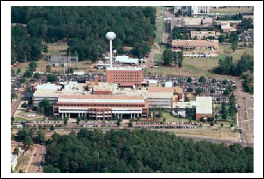 Dr. T. K. Williams followed Dr. Conn from 1986 – 1988. In 1988, Dr. Martin Dalton assumed the position of Chief of Surgery, and he served until 1990. From 1990 – 1992, Dr. Carol Scott-Connor served as the Chief of Surgery at the VA Medical Center. In 1997, the Medical Center was rededicated as the G. V. (Sonny) Montgomery VA Medical Center. Dr. Scott-Conner was succeeded as Chief of Surgery by Dr. Kenneth Simon from 1993 – 1999. By 1998, major additions to the VA Medical Center had been accomplished. In 1999, Dr. Charles Clericuzio became the Chief of Surgery.
Dr. T. K. Williams followed Dr. Conn from 1986 – 1988. In 1988, Dr. Martin Dalton assumed the position of Chief of Surgery, and he served until 1990. From 1990 – 1992, Dr. Carol Scott-Connor served as the Chief of Surgery at the VA Medical Center. In 1997, the Medical Center was rededicated as the G. V. (Sonny) Montgomery VA Medical Center. Dr. Scott-Conner was succeeded as Chief of Surgery by Dr. Kenneth Simon from 1993 – 1999. By 1998, major additions to the VA Medical Center had been accomplished. In 1999, Dr. Charles Clericuzio became the Chief of Surgery.
Mississippi State Sanitorium, Magee, Mississippi
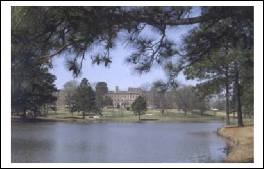 The Thoracic Surgery residents from The University of Mississippi School of Medicine spent rotations at The Mississippi State Sanitorium for Tuberculosis, established in 1916. The experience was described thusly by Professor Dov Weissberg, Department of Thoracic Surgery, Tel Aviv University, Sackler School of Medicine, Israel, a resident with Dr. Hardy, "…the only surgeon in the house was the thoracic resident from the University Hospital three times a week one of the senior thoracic surgeons from the Medical Center in Jackson used to come to the Sanitorium to teach and help me with the operations. The majority of operations were in patients with pulmonary tuberculosis, but there were also many with lung cancer, infectious diseases of the lung and chest cavity, lung cysts, emphysematous bullae and other problems. I also did all the surgical work outside the chest from operations on the gallbladder, uterus, or prostate. I contacted the appropriate expert at the University Hospital and made an appointment for the operation date. I performed all the operations with the experts."
The Thoracic Surgery residents from The University of Mississippi School of Medicine spent rotations at The Mississippi State Sanitorium for Tuberculosis, established in 1916. The experience was described thusly by Professor Dov Weissberg, Department of Thoracic Surgery, Tel Aviv University, Sackler School of Medicine, Israel, a resident with Dr. Hardy, "…the only surgeon in the house was the thoracic resident from the University Hospital three times a week one of the senior thoracic surgeons from the Medical Center in Jackson used to come to the Sanitorium to teach and help me with the operations. The majority of operations were in patients with pulmonary tuberculosis, but there were also many with lung cancer, infectious diseases of the lung and chest cavity, lung cysts, emphysematous bullae and other problems. I also did all the surgical work outside the chest from operations on the gallbladder, uterus, or prostate. I contacted the appropriate expert at the University Hospital and made an appointment for the operation date. I performed all the operations with the experts."
North Mississippi Medical Center, Tupelo, Mississippi
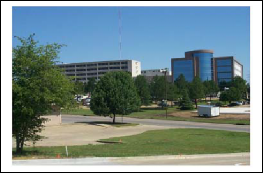 The general surgery residency began rotating residents at the North Mississippi Medical Center in Tupelo in 1970. Residents were assigned to surgeons in the Surgical Clinic of Tupelo. The clinic had begun in 1960 as The Kirk and Caldwell Clinic. Dr. Kirk was from Tupelo, and he had attended the University of Mississippi for his first two years of medical school, finishing his last two years at the University of Pennsylvania. Dr. Hardy was a chief resident at the University of Pennsylvania when Dr. Kirk was a third-year medical student. Dr. Kirk completed a surgery residency at the Presbyterian Hospital in Philadelphia, and he returned to Tupelo to practice. He recruited his cousin, Dr. Robert Caldwell, from Hickory, NC, where Dr. Caldwell had entered practice after finishing a surgery residency with Dr. Hardy at the University of Mississippi Medical Center. Dr. Caldwell, originally from Baldwyn, MS, was one of Dr. Hardy's first four chief residents. He became the first director of the residency rotation, and he served in that capacity until his death in 1979.
The general surgery residency began rotating residents at the North Mississippi Medical Center in Tupelo in 1970. Residents were assigned to surgeons in the Surgical Clinic of Tupelo. The clinic had begun in 1960 as The Kirk and Caldwell Clinic. Dr. Kirk was from Tupelo, and he had attended the University of Mississippi for his first two years of medical school, finishing his last two years at the University of Pennsylvania. Dr. Hardy was a chief resident at the University of Pennsylvania when Dr. Kirk was a third-year medical student. Dr. Kirk completed a surgery residency at the Presbyterian Hospital in Philadelphia, and he returned to Tupelo to practice. He recruited his cousin, Dr. Robert Caldwell, from Hickory, NC, where Dr. Caldwell had entered practice after finishing a surgery residency with Dr. Hardy at the University of Mississippi Medical Center. Dr. Caldwell, originally from Baldwyn, MS, was one of Dr. Hardy's first four chief residents. He became the first director of the residency rotation, and he served in that capacity until his death in 1979.
Dr. Benton Hilbun joined the group in 1967, following completion of his residency with Dr. Hardy. He became the director of the residency rotation in 1979, and he held that position until his retirement in 1998. Dr. Jimmy Hamilton succeeded Dr. Hilbun in 1998, and he serves currently as the residency director.
Mississippi Baptist Medical Center, Jackson, Mississippi
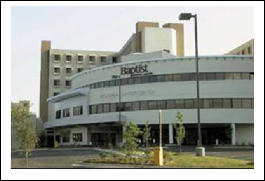 The general surgery residency began rotating residents at the Mississippi Baptist Medical Center just south of the University Campus in 1999. Residents were assigned to general surgeons with the Surgical Clinic Associates and, beginning in 2001, to vascular surgeons with Cardiovascular Surgical Associates. Directing the rotation with Surgical Clinic Associates is Dr. Randle Voyles, and directing the rotation with Cardiovascular Surgical Associates is Dr. Charles O'Mara. The cardiothoracic surgery residency began rotating residents at the Mississippi Baptist Medical Center in 2001, with cardiac surgeons with Cardiovascular Surgical Associates under the direction of Dr. Martin McMullan until he retired and currently with Dr. Stewart Horsley. The plastic surgery residency began rotating residents at the Mississippi Baptist Medical Center in 2002 with surgeons in the Clinic of Plastic Surgery, and Dr. Robert Allen Smith directed the rotation until the rotation was discontinued in 2006. The urology residency began rotating residents at the Mississippi Baptist Medical Center in 1987 with Dr. James Keeton as the residency director. After a hiatus that began in 1992, the popular rotation was re-established in 2001. The residency director was Dr. James Keeton, and he was succeeded by Dr. Charles Secrest.
The general surgery residency began rotating residents at the Mississippi Baptist Medical Center just south of the University Campus in 1999. Residents were assigned to general surgeons with the Surgical Clinic Associates and, beginning in 2001, to vascular surgeons with Cardiovascular Surgical Associates. Directing the rotation with Surgical Clinic Associates is Dr. Randle Voyles, and directing the rotation with Cardiovascular Surgical Associates is Dr. Charles O'Mara. The cardiothoracic surgery residency began rotating residents at the Mississippi Baptist Medical Center in 2001, with cardiac surgeons with Cardiovascular Surgical Associates under the direction of Dr. Martin McMullan until he retired and currently with Dr. Stewart Horsley. The plastic surgery residency began rotating residents at the Mississippi Baptist Medical Center in 2002 with surgeons in the Clinic of Plastic Surgery, and Dr. Robert Allen Smith directed the rotation until the rotation was discontinued in 2006. The urology residency began rotating residents at the Mississippi Baptist Medical Center in 1987 with Dr. James Keeton as the residency director. After a hiatus that began in 1992, the popular rotation was re-established in 2001. The residency director was Dr. James Keeton, and he was succeeded by Dr. Charles Secrest.
St. Dominic Hospital, Jackson, Mississippi
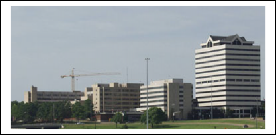 The Division of Plastic Surgery began a residency rotation at Plastic Surgery Associates in 2001. Dr. Michael Jabaley, former chief of the Division of Plastic Surgery, serves as the residency rotation director. The Division of General surgery began a residency rotation in vascular surgery in 2001 and in general surgery in 2002. Dr. Charles O'Mara directs the vascular surgery rotation, and Dr. Randle Voyles directs the general surgery rotation.
The Division of Plastic Surgery began a residency rotation at Plastic Surgery Associates in 2001. Dr. Michael Jabaley, former chief of the Division of Plastic Surgery, serves as the residency rotation director. The Division of General surgery began a residency rotation in vascular surgery in 2001 and in general surgery in 2002. Dr. Charles O'Mara directs the vascular surgery rotation, and Dr. Randle Voyles directs the general surgery rotation.
Mississippi State Hospital, Whitfield, Mississippi
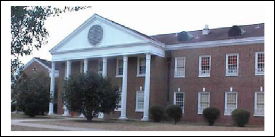 The urology residents began seeing patients at the Mississippi State Hospital in the Whitfield Medical Surgical Hospital clinics in 1968, and this continued until the 1990s. The resident experience was re-established in 2003. Dr. Lamar Weems, serving as chief of the Division of Urology, directed the rotations until his retirement in 2003. The rotation is directed currently by Dr. Paige White.
The urology residents began seeing patients at the Mississippi State Hospital in the Whitfield Medical Surgical Hospital clinics in 1968, and this continued until the 1990s. The resident experience was re-established in 2003. Dr. Lamar Weems, serving as chief of the Division of Urology, directed the rotations until his retirement in 2003. The rotation is directed currently by Dr. Paige White.
Mississippi Methodist Rehabilitation Center, Jackson, Mississippi
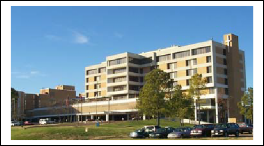 The general surgery, cardiothoracic surgery, urology, and plastic surgery residencies have rotations at the Mississippi Methodist Rehabilitation Center that is located contiguous to the University Hospitals and Clinics. The residency directors from the University Hospital serve as the residency directors at the MMRC.
The general surgery, cardiothoracic surgery, urology, and plastic surgery residencies have rotations at the Mississippi Methodist Rehabilitation Center that is located contiguous to the University Hospitals and Clinics. The residency directors from the University Hospital serve as the residency directors at the MMRC.
Rankin Medical Center, Brandon, Mississippi
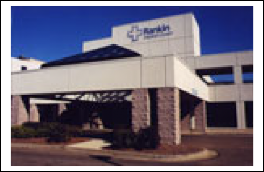 The plastic surgery residency began rotating residents with its full-time faculty at the Rankin Medical Center in 2003. Dr. William Lineaweaver, the chief of the Division of Plastic Surgery, directs the rotation.
The plastic surgery residency began rotating residents with its full-time faculty at the Rankin Medical Center in 2003. Dr. William Lineaweaver, the chief of the Division of Plastic Surgery, directs the rotation.
The Department of Surgery enters the twenty-first century as a vigorous and a vital member of the University Medical Center. Clinical programs in microvascular surgery, chronic wound management, prostate cancer, neonatal cardiac surgery, pediatric oncology, minimally invasive surgery, and trauma have attracted the highest caliber clinical and research faculty.
For More Information Concerning the History of the Department of Surgery and the University of Mississippi Medical Center
Quinn, Janis. Promises Kept: The University of Mississippi Medical Center, Jackson, MS, University of Mississippi Medical Center and University Press of Mississippi, 2005
Hardy, James D. The Academic Surgeon: An Autobiography, Mobile, AL, Magnolia Mansions Press, 2002
Hardy, James D. The World of Surgery 1945-1985: Memoirs of One Participant, Philadelphia, University of Pennsylvania Press, 1986.
Sansing, David. The University of Mississippi: A Sesquicentennial History, Jackson, MS, University Press of Mississippi, 1999.


